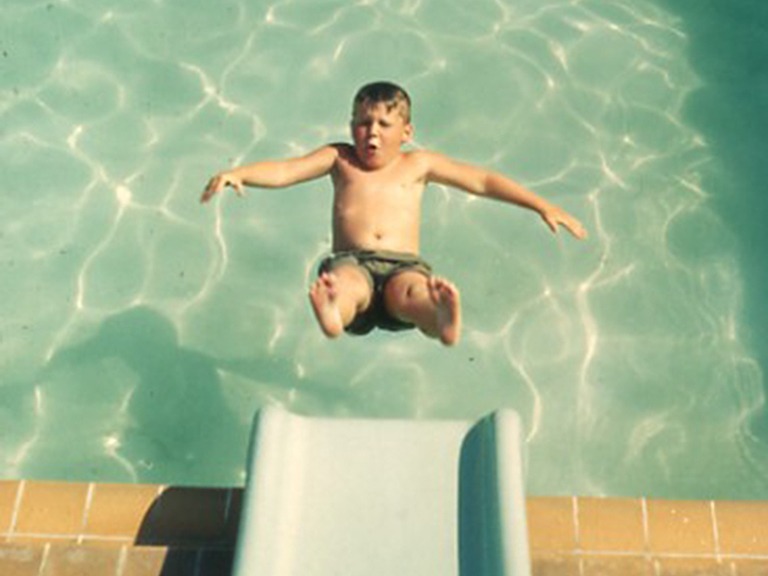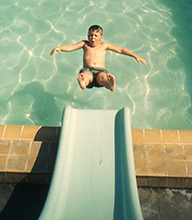
If childhood is supposed to be a time for play, why do today’s kids spend so much time working?
In the past month, I’ve attended two elementary school plays. One was for a family friend, populated by mostly white kids from Long Island and suburbs outside the city. The other was one my 3rd students in the Bronx put on. Three of my kids wrote a scene about a boy who asks his friend for money. His friend refuses, the boy steals it, and they’re both promptly arrested. The friend with money bails the boy out, and asks what he needed the money for. The boys explains that he needs to pay his phone bill and a vet bill for his dog. Now, he adds, I need money for my fine from being arrested. In the end, the friend lends the boy the money. It’s a pretty devastating portrayal of the cyclical criminalization of poverty, but it was scene among others containing ninjas and witches and ghosts and dragons. At the other play, a girl wrote a scene about studying for a giant end-of-the-year test. She misses everything fun that her friends do for months and months, because she’s studying. In the end, she aces the test.
There’s a popular conception in mainstream US culture that childhood is carefree. Self-help listicles abound promising to teach struggling adults how to Live Like a Kid, Have Fun Like a Kid, Enjoy Life Like a Kid. Any food containing peanut butter, chocolate, or marshmallow, no matter how fancy, sells the promise to “taste like your childhood.” The sentiment goes has little to do with premise that children are innocents who deserve care, forgiveness, understanding, and support—ideas supported selectively, at best, in both US culture and policy. The mythical childhood of the mainstream imagination turns children into two-dimensional cartoons, devoid of emotional depth, and immune from the world’s oppressive structures. It flattens all children into stock photos—white, typically developing, stereotypically gendered, and climbing on a well-maintained playground against the sunset.
But in order for childhood to be carefree, it would have to exist in an entirely separate world from the adult one, full as it is of cares, some more immediately consequential than others. Peruse the listservs of gentrified Brooklyn to find parents stressing about whether their two-year-old is on track to pass the Gifted and Talented test at age four. Stay in the same borough, even the same neighborhoods, to find parents who are food and housing insecure. The well-resourced parents test-prep their babies, gerrymander their school districts, and lie about their addresses so that their kids don’t end up at the same public schools serving their poor neighbors. Childhood is not carefree.
The myth of childhood leaves some adults unsure of how to react to emotional gravity coming from the mouth of a cute little kid. When I heard a second grader, his face adorably covered in yogurt, tell his teacher, “When I get depressed, I just eat and eat and eat,” my first thought was that it was hilarious. It sounds like a Cathy comic strip; what does an eight year old have to be depressed about? I thought this even though I was a kid who called myself depressed too. Invite people to view childhood through an autobiographical lens, and suddenly it’s obvious what a little kid has to be depressed about. Fitting in, standing out, dealing with authority, being lonely, never being alone, being different—and that’s all just on the individual level.
For some children, that struggle is set against the backdrop of segregated housing, closing schools, economic insecurity, and the looming threat of incarceration. Those children are frequently told, often by well-intentioned adults, that they are more likely to end up in prison than graduate. Their stock photos involve jail bars instead of monkey bars, even though they’re the same young age as their more privileged counterparts. They are deemed “at risk,” as if there’s something inside them that’s about to go wrong. The “at risk” child is cast opposite the carefree child.
The child with the yogurt on his face was also the child who introduced me to Toilet Candy. It’s just sour candy in a plastic vessel shaped like a tiny neon toilet, but every kid I’ve ever met thinks it’s comedy gold. The more appalled I acted about the toilet candy, the more delighted the boy became. Like children’s ears can hear certain high-pitched sounds adults can’t, like their taste buds can enjoy the powerful sugar-syrup contained in the Toilet Candy, so too can their senses of humor revel in something that many adults just cannot grasp. That kid turned the Toilet Candy into a running joke between us, bringing it out to show me whenever he saw me so that I could act grossed out and he could laugh maniacally. He was a very serious boy, but also a very silly one.
When adults wax nostalgic about an abstract childhood, I think what they’re longing for is not the simplicity of being young, but the fun. Compared to adults, children are primed for fun like coiled springs. Sometimes when I’m teaching I imagine the students as a box full of bouncy balls that’s been upturned into the classroom. A lot of the work of being an adult who works with children is to manage all the bouncing, but it’s also the thing that draws you in. Adults are fine at having fun, given the right circumstances, but kids do it automatically. There’s no such thing as “down time” with children, something I’m constantly forgetting as an educator. “Just sit and relax for two minutes while I get the other class lined up,” I’ll say, and while my back is turned the kids have invented an elaborate 20-person game. Children can barely stop playing, whereas adults need to make the effort to schedule it in.
My job is basically to have fun with children. I teach after-school arts enrichment. I’ve worked with roughly 200 kids every year for the past six years, all in a high-poverty community, and while I’ve can’t think of a single carefree child, I also can’t think of one who wasn’t any fun at all. Even the middle-schoolers, who are old enough to be going through grown-up heavy stuff, are ridiculously fun. They talk about bullying, sex, gang violence, drugs, then beg me to play what they call “The Laughing Game,” which is just a game where one kid has to try to make everyone else smile. The kids drop like flies and roll around on the floor holding their stomachs, a cartoon illustration of laughter.
The kids I teach, the little ones to the big ones, laugh with their whole bodies. Their knees buckle and they reach out and bring whoever is nearby down with them. When I first started teaching I would try to tell them not to throw themselves on the floor whenever they laughed. Now I just plan on it, budget extra time if I need to. “Miss, I’m actually crying!” a seventh-grade boy screamed to me recently after he lifted himself off the ground, wiping his eyes. In their cartoon laughter they come closest to the cartoon of childhood—a picture of unadulterated joy. In their readiness to have fun and the enthusiasm with which they have it, they do make youth seem idyllic.
This part gets left out of the grander narrative about children. Poor black and brown kids aren’t included in simplistic picture of the carefree childhood, and when they are included at all, it’s to stand in contrast to it. Their images, their schools, their communities are talked about as both tragedies and afterthoughts. That those kids are kids, fun and hilarious and ridiculous and imaginative, despite the different landscape of their childhood cares, gets left out. I don’t want the structural marginalization of students like mine to be ignored, but I also don’t want their childhoods to be pathologized.
The same logic that excludes certain young people from the premise of a carefree childhood justifies the economic and state violence done to them. It’s the logic that leads white people to see black children as four and a half years older than they actually are. It turns their toy guns into real threats, their pool parties into emergencies. It lets adults look with satisfaction on the charter school in Harlem that suspend 22 percent of the students in the name of “success,” that keep extra pants around for when the kids are so nervous to fail a test they pee themselves. No monkey bars against the sunset for them.
The very important end-of-year test featured in the little girl’s play is used to hold other kids back, fire their teachers, and close their schools. The test is written not for them to succeed, but for them to fail. The difference between the little girl’s play about the test and the little boys’ play about getting arrested is how they reflect the different expectations put on the kids. She misses out on all the fun around her so she can secure her future success. For the boys, success comes in the form of having enough money to pay your bills and stay out of jail. All kids have to worry about tests, but not all kids have to worry about poverty and policing.
People furrow their brows when I tell them I teach in the Bronx, even as I’m saying what incredible fun my job is. Working at both elementary and middle school must be nice, a person told me recently, because you can see if the kids are growing up to be okay. She was conjuring the sad image of the at-risk child, but all I could think of was my middle schoolers rolling around on the floor, cry-laughing. They’re at risk of a world waiting to close their schools, to profile and criminalize and deport them, to not pay them the same wages as their white peers. But the kids themselves are okay. They’re not carefree, but they sometimes laugh like they are.
